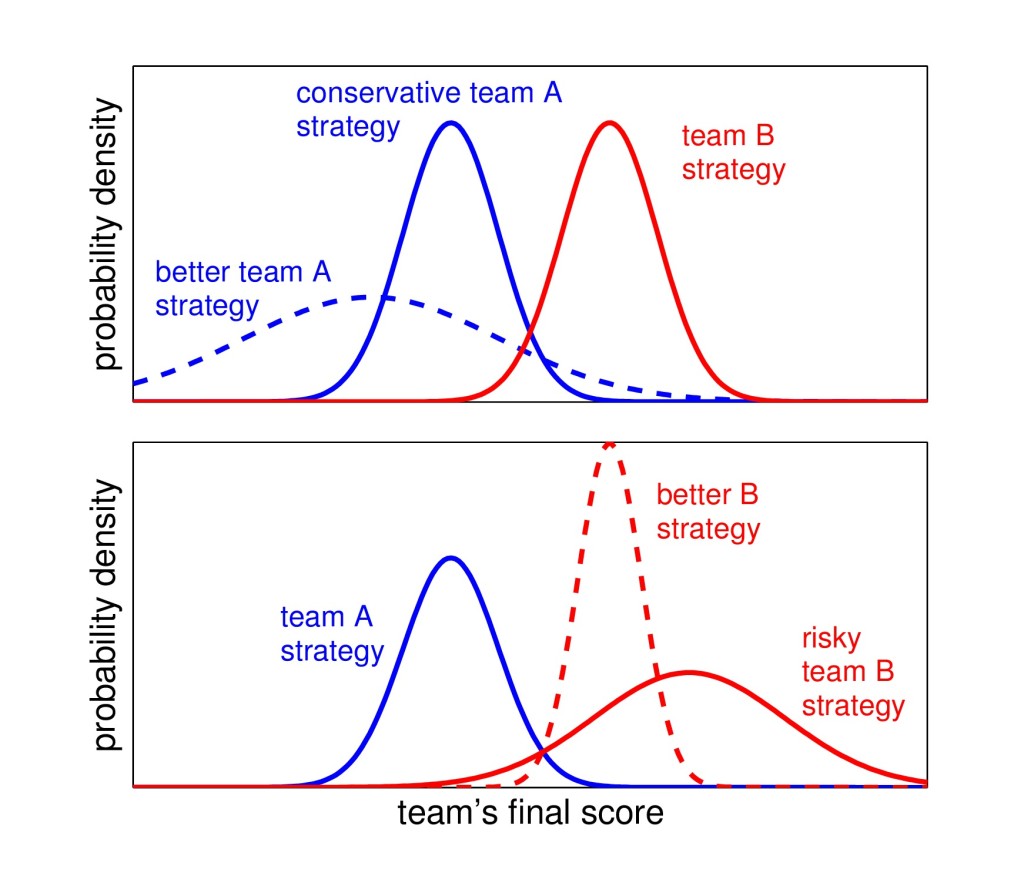Interesting post at Nylon Calculus about the things that can be optimized in a basketball strategy.
1. Allocative efficiency: Teams should allocate shots such that the marginal shot (the last “acceptable” shot) taken by each player on the court has an equal expected value for points.
2. Dynamic efficiency: Teams should pass up a shot that will lead to a lower expected value than what they could get with the remaining seconds on the shot clock.
3. Risk/reward tradeoff: Teams should choose shot strategies that maximize the probability of winning, not the number of points scored.
I agree that teams seem to be particularly bad at #3. It’s frustrating to see a team give up a big lead by hoisting up 3’s in an attempt to run the other team out of the building.
NBA players’ intuitive feel for the risk/reward tradeoff seems to have a number of deficiencies. Generally, NBA teams do respond correctly to “underdog” situations: they increase the proportion of 3’s taken when they have a big deficit and little time remaining. But they respond incorrectly to situations where they are favored. Where they should play conservatively (making safe, low-variance plays), they actually play less conservatively: taking more 3’s, for example.
In situations where the game is very close, NBA teams seem to become highly risk averse. For example, in such situations teams tend to take a suboptimally small number of 3-pointers.
